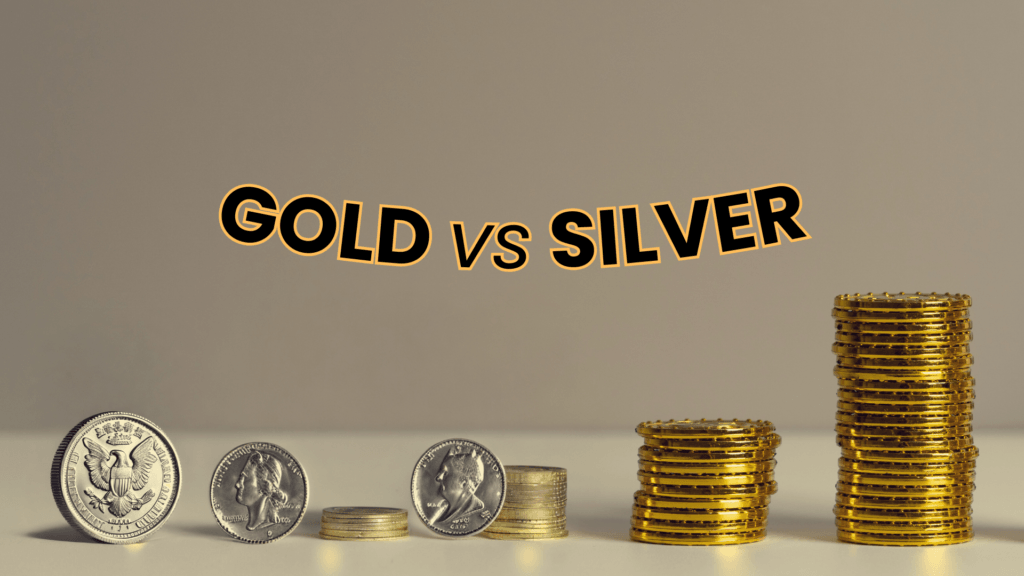Precious metals like gold and silver have been reliable investment options for centuries, offering protection against inflation, economic instability, and currency fluctuations. But if you’re considering investing in precious metals, you might wonder: which is the better option for you? In this blog, we’ll compare gold and silver, their unique advantages, and how to decide which suits your investment strategy.


Understanding the Value of Gold and Silver
Gold is often considered the ultimate safe-haven asset. It has been a symbol of wealth and stability for millennia, widely used by central banks and investors as a hedge against economic uncertainty. Silver, on the other hand, is both a precious and industrial metal. Its value is influenced not only by its rarity but also by its use in electronics, solar panels, and various industrial applications.
Key Differences Between Gold and Silver
- Price and Affordability
Gold is significantly more expensive than silver. As of recent trends, gold prices are often 70-80 times higher per ounce than silver. This makes silver a more affordable entry point for beginner investors, while gold requires a larger capital outlay. - Market Volatility
Silver is more volatile than gold. Its price fluctuations are driven by both its industrial demand and its status as a precious metal. Gold, being more stable, tends to hold its value better during economic downturns. - Storage and Portability
Gold is more compact in terms of value, meaning a smaller quantity is worth much more than silver. This makes gold easier to store and transport. Silver, due to its lower price, requires more storage space for the same investment value. - Liquidity
Gold is more liquid, meaning it’s easier to buy or sell quickly at market value. While silver is also traded widely, it might take slightly longer to find buyers for large quantities. - Economic Hedge
Both metals act as a hedge against inflation and currency devaluation, but gold is considered more reliable in times of severe economic crisis, while silver’s industrial use can cause its price to fluctuate.
Examples of Investing in Gold and Silver
- If you’re planning to safeguard wealth during uncertain economic times, gold is a preferred choice due to its stability. For instance, during the 2008 financial crisis, gold prices surged as investors sought safe havens.
- Silver might be ideal if you’re looking for a metal with higher growth potential during economic recovery periods. For example, as industries adopt renewable energy technologies, the demand for silver in solar panels is expected to rise.
Which is Better for You?
The choice between gold and silver depends on your financial goals and risk tolerance.
- Choose gold if you want long-term stability, easier storage, and a hedge against severe economic downturns.
- Opt for silver if you’re looking for a more affordable investment with potential for higher returns in the short to medium term due to industrial demand.
Diversifying with Both Metals
Many investors choose to diversify their portfolio by including both gold and silver. This strategy allows you to benefit from gold’s stability and silver’s growth potential, balancing your investment risk.
Conclusion
Gold and silver each have unique qualities that make them valuable investment options. Gold offers unparalleled stability and liquidity, making it ideal for wealth preservation. Silver, on the other hand, is more affordable and offers greater growth potential, thanks to its industrial demand. By understanding their differences and aligning them with your investment strategy, you can make an informed decision.
Whether you choose gold, silver, or both, investing in precious metals is a smart way to secure your financial future.




